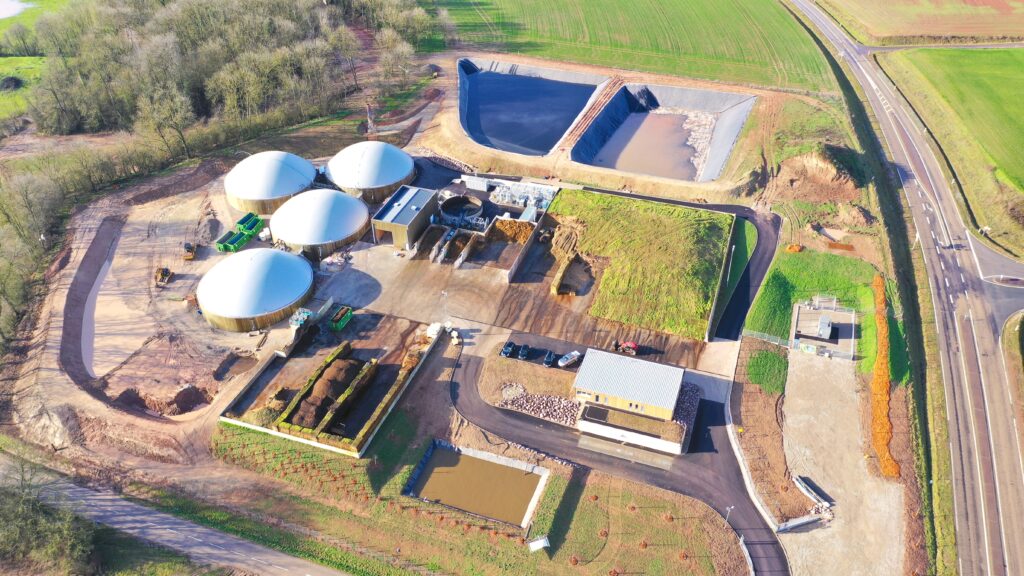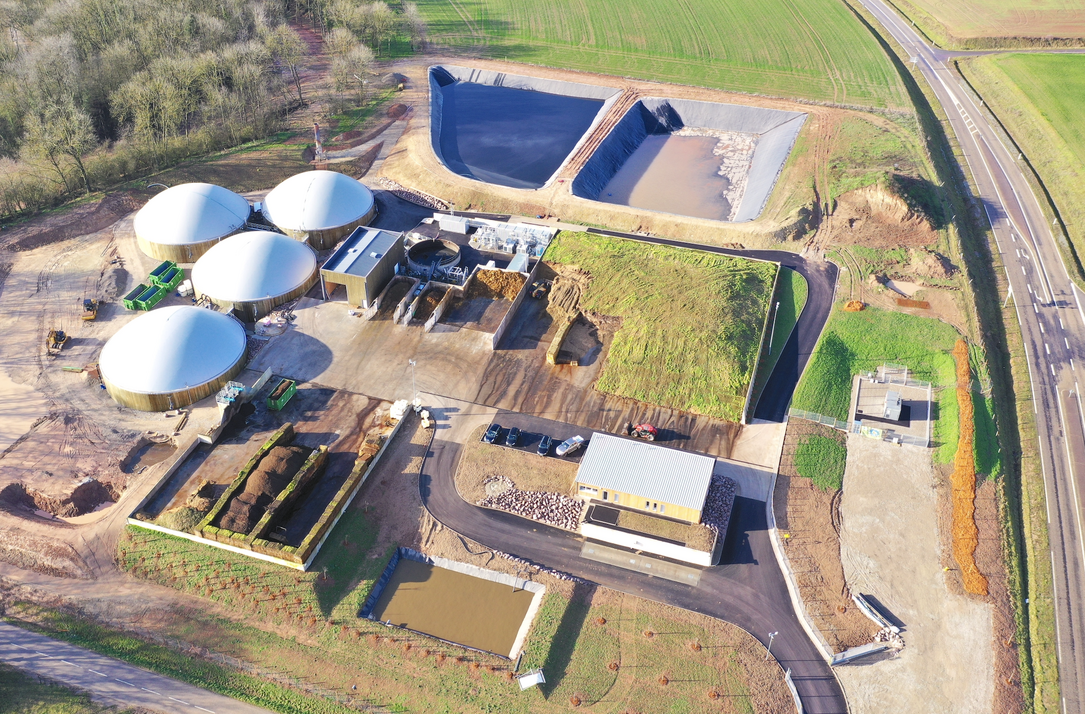
In June 2023, the French Government announced an ambitious national strategy for carbon capture, utilisation, and storage (CCUS). This initiative aims to capture 4–8.5 million tCO₂ per year by 2030 and 15–20 million tCO₂ per year by 2050. The goals include the potential integration of biogenic carbon, a promising solution in the fight against climate change. However, the path to achieving these goals is long, and a clear strategy is essential for success.
The Promise of BECCS
Bioenergy with carbon capture and storage (BECCS) emerges as a potential flagship technology in this strategy. By using organic sources like biomass to produce renewable energy while capturing and storing emitted CO₂, BECCS generates ‘negative emissions’. This technology is crucial for meeting the climate targets set by the Paris Agreement and for France’s national low-carbon strategy, which aims for around 10 million tonnes of negative emissions per year from BECCS by 2050.
In 2024, several encouraging developments occurred, such as the creation of the French Association for Negative Emissions (AFEN), which aims to support the development of an innovative carbon removal industry. Additionally, Carbon Impact, a French carbon removal project developer, in partnership with South Pole, a certified carbon asset developer, and Airfix, a CO₂ transport and storage specialist, are launching France’s first biogas-based BECCS project near Nancy. This project aims to sequester ~10,000 tCO₂ per year from 2026.
BECCS thus stands out in the current context as a promising solution to combat climate change and opens new opportunities to shape sustainable climate trajectories. This technology offers a dual advantage: it can produce renewable energy using organic sources such as agricultural waste while capturing and storing the resulting carbon dioxide emissions. By generating negative emissions, or carbon dioxide removal (CDR), BECCS helps to reduce carbon levels in the atmosphere, making it a key technologies for achieving the climate goals set by the Paris Agreement.
Challenges for BECCS
Despite its potential, BECCS faces considerable challenges. The main difficulty lies in the lack of demand and specific revenue sources for CDR technologies, making investments risky and complex. The BECCS value chain, which involves multiple stakeholders, makes it difficult to fairly distribute costs and benefits. Additionally, the high costs associated with the entire value chain, from CO₂ capture to storage, pose a major obstacle to profitability.
———
Sustainability and Availability of Biomass
The sustainability and availability of biomass are crucial aspects to consider in the context of the ecological transition. Biomass is a limited and coveted resource for various uses, from heat production to biofuel manufacturing. Overexploitation could lead to usage conflicts and negative environmental impacts. It is therefore crucial to develop clear arbitration criteria for the ethical and sustainable use of this valuable resource.
France’s national biomass mobilisation strategy emphasises the need to define biomass production rules and establish priorities for the use of CO₂ derived from this biomass. At the European level, the Renewable Energy Directive and the Land Use, Land-Use Change, and Forestry (LULUCF) Regulation imply sustainability criteria for biomass use in BECCS. It is crucial to further explore the potential risks of competition for biogenic CO₂ and develop clear arbitration criteria.
———
Monetisation and Economic Models
To overcome these challenges, it is essential to develop effective monetisation pathways for BECCS. The public sector can play a crucial role by providing financial incentives and supporting the development of necessary infrastructure. ‘Carbon Contracts for Difference’ (CCfDs) is a promising path. By compensating for the additional costs of energy-intensive industries, these contracts can make green technologies more attractive.
Public Authorities
Monetising BECCS on regulated markets raises important questions about its inclusion in the European Union Emissions Trading System (EU ETS). Integrating CDR into the EU ETS would allow installations to benefit from carbon credits, reduce their financial liability, and improve their competitiveness. Although this integration offers an additional economic incentive to invest in negative emissions technologies, thereby promoting BECCS development, it could also create challenges.
With a multi-stakeholder value chain, questions arise regarding the distribution of benefits. Additionally, BECCS is an emerging technology, and its inclusion in an existing emissions quota system might not fully reflect its value and potential for carbon emissions removal, as quotas can be affected by external factors and price volatility. A specific compensation mechanism focused on rewarding BECCS installations for each negative emission generated (e.g., tax credits) could also be considered. This would ensure more stable and direct financial support, fostering the development of this market for the transition to a low-carbon economy. However, creating a specific mechanism would represent an additional administrative burden. Both options should be carefully evaluated.
The public sector can also support BECCS through CCfDs. The CCfD concept involves government compensations for energy-intensive industries through climate protection agreements to cover their additional costs (OPEX and CAPEX) for transitioning their production. The goal is to make green technologies more attractive to energy-intensive industries. Thus, the public sector would act as a financial partner, ensuring the economic viability of BECCS projects and promoting their large-scale deployment. These carbon contracts could also be used to establish risk-sharing and minimisation mechanisms between the public and private sectors, thereby strengthening investor confidence and facilitating access to financing for essential projects in the fight against climate change. Government support should enable emitters to install the necessary capture tools and cover the costs associated with transport and storage to facilitate the deployment of this infrastructure.
The Voluntary Carbon Market
Monetising BECCS on the Voluntary Carbon Market (VCM) can make a significant contribution to the sector. The VCM can help reduce the costs associated with implementing BECCS technology by partially covering these expenses. This financial assistance reduces the impact on the price of generated energy, making BECCS more competitive in the energy market and boosting its demand (the availability of sustainable biomass must always be considered in this environment). Additionally, the VCM can play a complementary role to public subsidies by providing an additional source of revenue for BECCS installations. By providing carbon credits for generated negative emissions, the VCM would strengthen the economic viability of projects and encourage their implementation.
It could be envisaged that the VCM might even become the primary source of revenue for BECCS. By rewarding BECCS installations for each negative emission they generate, the VCM offers a direct and powerful financial incentive for companies to adopt this innovative technology. As an important tool in the transition to a low-carbon economy, BECCS can benefit from the VCM support to attract private investments and accelerate its deployment. The VCM thus acts as a catalyst for the growth of the BECCS sector by offering financing opportunities and valuing the efforts of companies that actively contribute to the fight against climate change.
The VCM is still in its early stages, and currently, considerable efforts are being made within various initiatives aimed at developing, standardising and ensuring compliance with quality, trust, and transparency requirements (e.g. Integrity Council for the Voluntary Carbon Market).
Strengthening the Viability of BECCS Projects in France
To strengthen the viability of BECCS projects in France, several specific measures can be considered. First, the application of public subsidies is crucial to providing an initial boost to these projects. These subsidies could cover part of the development and installation costs of the necessary BECCS infrastructure, thereby reducing financial risks for private investors. Specific regulations could also accelerate the adoption of BECCS technologies by setting stricter environmental standards and instituting financial incentives for companies that adopt these technologies.
The introduction of guarantees to reduce the inherent risks of early BECCS projects is also essential. These guarantees could take the form of government insurance or risk-sharing mechanisms between the public and private sectors. They would help attract investments by offering increased financial security for BECCS projects, thereby promoting their large-scale development. Finally, close collaboration between various stakeholders, including governments, businesses, and civil society organisations, is necessary to ensure smooth and effective implementation of BECCS projects in France.
Action Plan for BECCS Development
For France to fully harness the potential of BECCS, a national roadmap for BECCS sector development must be established. This roadmap should include a detailed assessment of BECCS’s potential in France, taking into account available biomass resources, necessary infrastructure and regulatory requirements. Ensuring transparency and traceability throughout the BECCS value chain is also crucial, with rigorous monitoring mechanisms in place to ensure that generated negative emissions are properly accounted for and verified.
Public financial support for pioneers and early BECCS projects is crucial to stimulate the market. This support could take the form of direct subsidies, tax credits, or innovative financing mechanisms such as CCfD. By providing initial financial support, the government can encourage companies to invest in BECCS and develop pilot projects that demonstrate the economic and environmental viability of this technology.
Finally, BECCS policies and strategies must be flexible to allow the integration of innovative measures for sector development. This could include tax incentives for companies adopting BECCS, public-private partnerships for the development of necessary infrastructure, and research and development programs to improve the efficiency and profitability of BECCS. By adopting a flexible and proactive approach, France can become a global leader in negative emissions and contribute significantly to the fight against climate change.
Future Outlook
BECCS represents a promising solution to achieve France’s ambitious climate goals. In 2024, several encouraging developments occurred, such as the creation of the French Association for Negative Emissions (AFEN), which aims to support the development of an innovative CDR industry. Additionally, a pioneering BECCS project has been announced in the Nancy region. However, to fully exploit its potential, it is crucial to overcome current challenges through significant investments, effective support mechanisms and clear regulations. By combining these efforts, France can play a leading role in the fight against climate change and the transition to a sustainable economy. Beyond achieving its climate goals, France can also inspire other countries to adopt similar technologies for a greener and more sustainable future.
